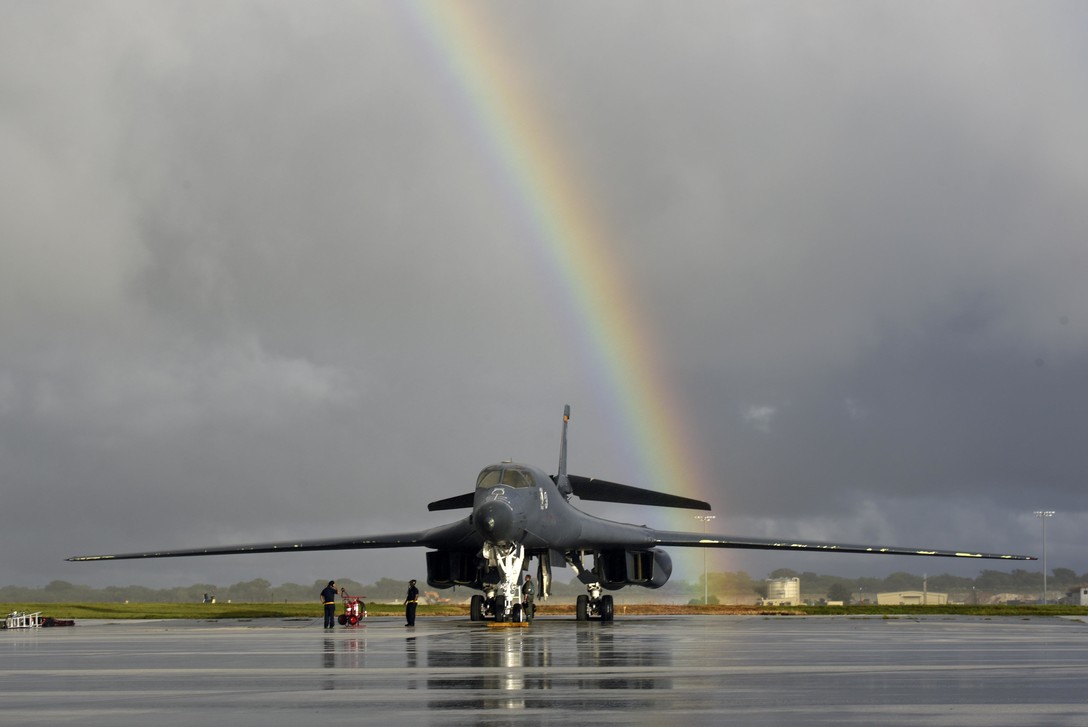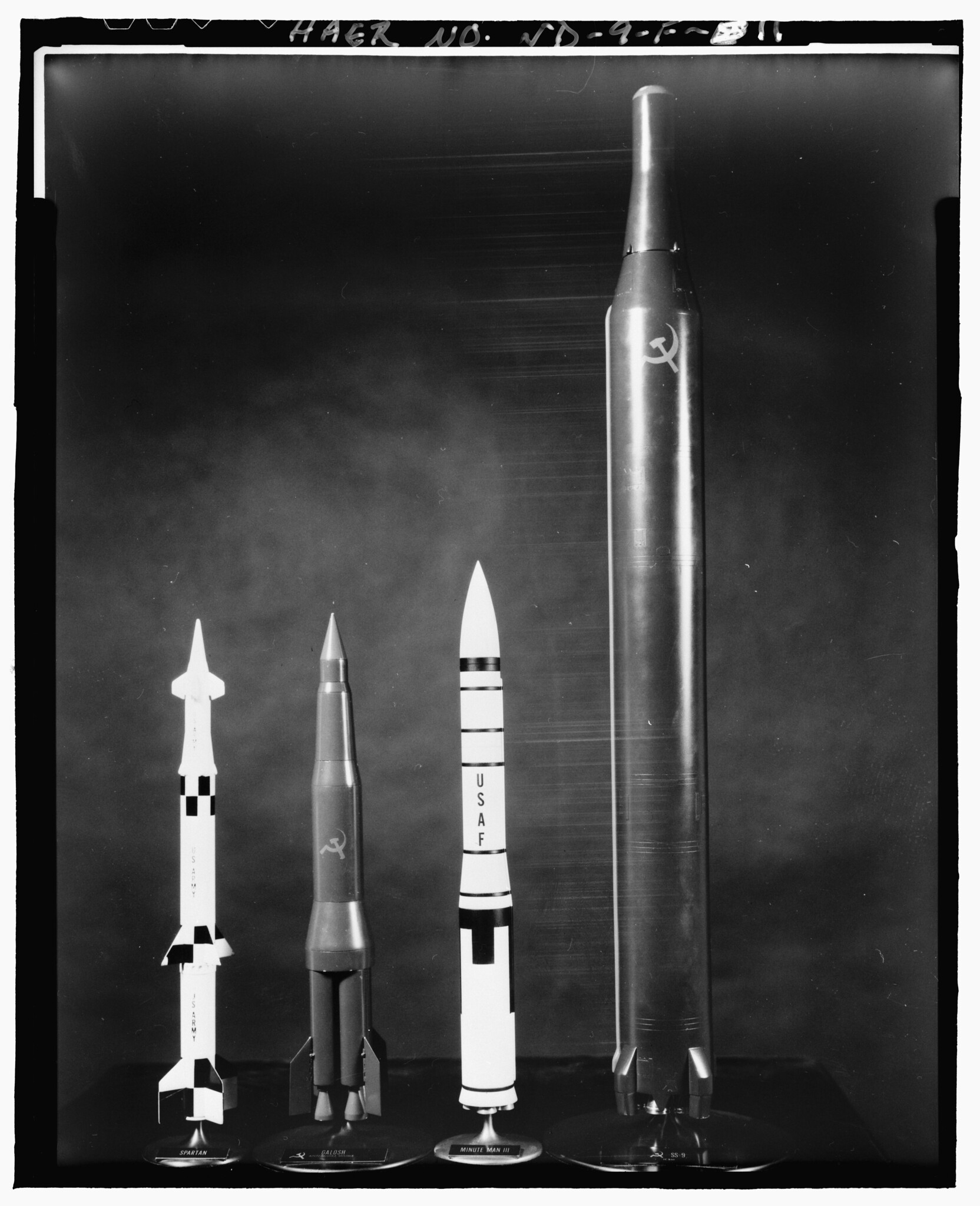
Previous posts listed the strategic nuclear arsenals of the U.S. and U.S.S.R. in 1990.
This discussion will compare the total inventories and then calculate my wild guesses for weapons on daily alert.
Full disclosure: Back in the bad old days of the Cold War, I was a tiny little cog in the ICBM forces listed below.
Here is a comparison of total inventory for each country:
| US | launcher | total warhead | total mt | total Equiv mt |
| total land based | 1,000 | 2,450 | 1,119 | 1,375 |
| total sea based | 908 | 5,612 | 457 | 1,026 |
| total bomber based | 363 | 9,242 | 5,876 | 6,474 |
| total of above | 2,271 | 17,304 | 7,452 | 8,875 |
| . | ||||
| Soviet | launcher | total warhead | total mt | total Equiv mt |
| total land based | 1,451 | 6,657 | 3,528 | 4,316 |
| total sea based | 959 | 2,743 | 955 | 1,259 |
| total bomber based | 175 | 790 | 445 | 535 |
| total of above | 2,585 | 10,190 | 4,928 | 6,109 |
Lots of comparisons are obvious.
The bulk of the deliverable firepower (73%) in the US arsenal is from manned bombers. Only a fraction of those are on daily alert. Most will take a day or several days to generate to alert status. Essentially all of the ICBMs are on daily alert. Well, maybe 98% or 99%, but you see the point.
Most of the Soviet firepower was in ICBMs. They had a far smaller bomber force than the U.S. The loads on Soviet bombers were an even smaller portion of their firepower. When fully generated, American bombers had slightly more firepower than the full Soviet arsenal.

American daily alert status
Back in 1990, the SSBNs had two crews. Before leaving station, each SSBN would have a replacement in the area. When a sub returned to port, the alternate crew came aboard, refitted, resupplied, maintained, and went on patrol when the other sub neared end of its patrol. Thus half were on alert at any one time.
So I will assume daily alert status at:
- 99% – ICBMs
- 50% – SSBNs
- 17% – Bombers, assuming out of thin air that 2 bombers per squadron were on alert
Stringing together all my assumptions gives the following nuclear assets on alert daily:
| launcher | total warhead | total mt | total Equiv mt | |
| US alert rate | ||||
| ICBM | 99% | 99% | 99% | 99% |
| SSBN (subs) | 50% | 50% | 50% | 50% |
| bombers (2 of 12) | 17% | 17% | 17% | 17% |
| . | ||||
| On alert: | ||||
| ICBMs | 990 | 2,426 | 1,107 | 1,361 |
| SLBMs | 454 | 2,806 | 228 | 513 |
| bombers | 62 | 1,571 | 999 | 1,101 |
| daily alert | 1,506 | 6,803 | 2,335 | 2,975 |
Thus, 46% of the daily availability was from ICBMs and 37% from bombers.

Soviet daily alert status
During the depths of the Cold War the Evil Empire had most of its nuclear inventory concentrated in land based missiles. Even at full generation, on 21% was from subs and a mere 9% from manned bombers.
In terms of daily alert, article says 1 out of 6 subs would be on patrol. I will assume 2 bombers per squadron of 12 were on daily alert.
Based on my wild guesses and calculations, the daily alert availability would be:
| launcher | total warhead | total mt | total Equiv mt | |
| Soviet alert rate | ||||
| ICBM | 98% | 98% | 98% | 98% |
| SSBN (subs) | 17% | 17% | 17% | 17% |
| bombers (2 of 12) | 17% | 17% | 17% | 17% |
| . | ||||
| On alert: | ||||
| ICBMs | 1,422 | 6,524 | 3,457 | 4,229 |
| SLBMs | 163 | 466 | 162 | 214 |
| bombers | 30 | 134 | 76 | 91 |
| daily alert | 1,615 | 7,124 | 3,695 | 4,534 |
That gives an even higher concentration on ICBMs, with only 5% of firepower from SSBNs and 2% from bombers.
As you can see, in terms of daily alert, the Soviets had more platforms, more warheads, more megatons, and more equivalent megatons available than did the U.S.A.